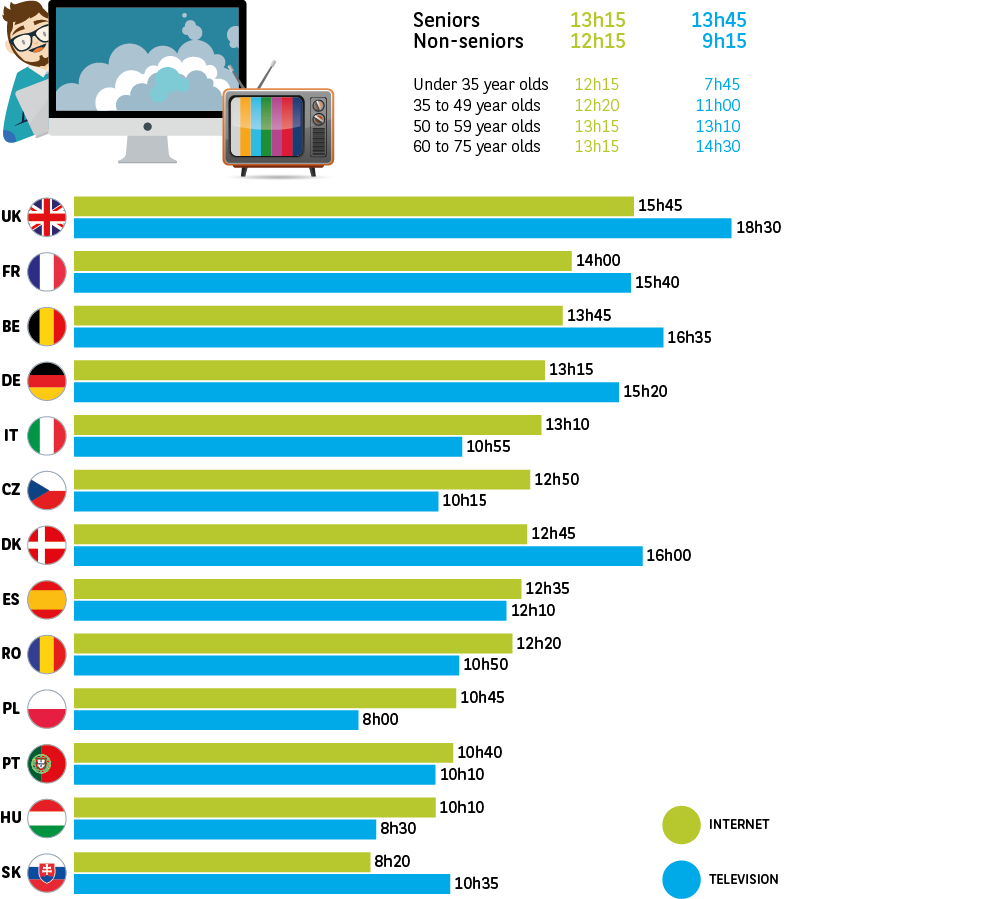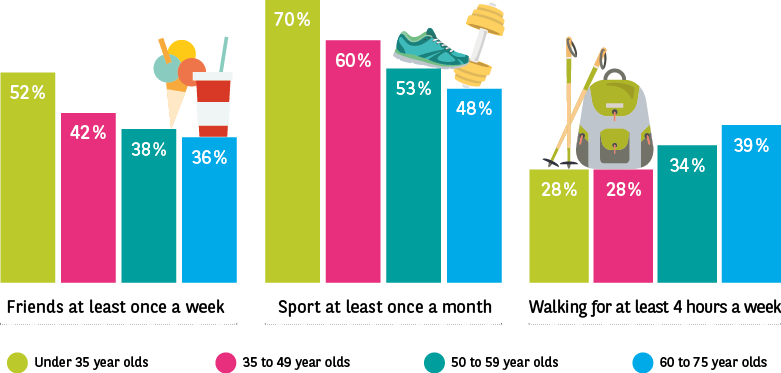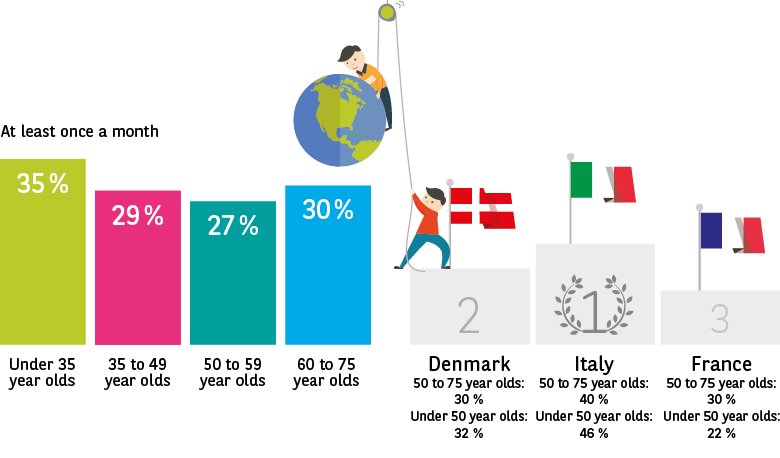A HIGHLY SOCIALLY ACTIVE GENERATION


Connected to the globe
The first generations of technophiles are now reaching retirement age. They have previously used digital tools as part of their job and often own several devices. Having been won over by the internet primarily because it allows them to keep in touch with friends and family (email and social media) or to meet other web users (forums, etc.), seniors now go online for a whole host of reasons.
They are very well equipped, but prefer desktop computers to more mobile technologies (tablets, smartphones, laptops), although the latter are extremely popular in Spain and Italy. They go online at all hours and, in some cases, more often than young people in the evening and at night.
Seniors 2.0
Seniors have developed a taste for websites on the themes of health and beauty. They are also very fond of online games. Proud of their technological independence, they increasingly make use of digital services to manage their travel arrangements and health.
In France, more than one in four sexagenarians belong to a social network, twice as many as five years ago (source: Credoc). Social media penetration is also very high in Portugal and Hungary.
TV is putting up a fight
But this does not mean that the internet has replaced television, the medium traditionally preferred by seniors. It allows them to relax and escape, keeps them informed and is even a way for some to get to sleep.
If we add up the time spent online and watching television (Fig. 22), seniors spend 27 hours a week in front of their screens, more than an entire day. More tellingly, that’s 20 % more time than their juniors. The days when seniors could be considered “technophobes” seem well and truly over. And this enthusiastic presence on the web and in front of their TVs makes them great targets for advertising.
Fig. 22 On average, how much time per week do you spend on the following activities? Surfing the internet (on any type of device: computer, smartphone or tablet) / Watching television
Source: L’Observatoire Cetelem de la Consommation 2016; scope of the chart: seniors.
Northern countries lead the digital stakes
From a geographical perspective, some countries demonstrate a staggering digital tropism. Europe’s digital champions are the British, who spend almost 16 hours a week on the internet and more than 18 hours a week in front of their televisions, a “digital existence” that consumes more than 34 hours of their week. The French and the Belgians are just behind them with a combined total of 30 hours, including 14 hours on the web.
More open-minded than sociable
At first glance, seniors have more free time than 35 to 49 year olds. They devote more time to the internet than to regular activities out of the home. In this respect, they are very similar to the younger generations.
Thus, 37 % of European seniors see their friends at least once a week, compared with 52 % of under 35s (Fig. 23).
One in two seniors practice a sport at least once a month, compared with 60 % of 35 to 49 year olds and 70 % of under 35 year olds. Spain, France and Italy are the countries where seniors are the most likely to take part in sports on a monthly basis. The figure in these countries is around 60 %, twice the proportion in Hungary and the United Kingdom, the bottom two nations of L’Observatoire Cetelem in this particular area. Physical activity can take a more gentle form, with seniors spending an average of 4.5 hours a week walking.
Lastly, when it comes to activities outside the home, Europe appears to be split in two, with Mediterranean seniors being very sociable and those in the North more reluctant to venture out.
Fig. 23 How often do you partake in the following activities? Seeing friends at least once a week / Practising a sport at least once a month / Walking for at least four hours a week)
Source: L’Observatoire Cetelem de la Consommation 2016 (in %).
France’s fondness for associations
Getting involved, sharing one’s experience, being of use, taking on responsibilities and meeting new people are just some of the pluses. But are seniors as keen to work for non-profit organisations in all European countries? Relatively speaking yes, because some 30 % of seniors give their time to an association at least once a month. However, this is a similar proportion to under 50s (Fig. 24).
The degree to which 50 to 75 year olds are involved in associations is also restricted by their availability, given the amount of time they regularly invest in their families. Being able to go away for a few weeks or simply have a rest, free of any constraints, is important to seniors. This can limit their desire to involve themselves in initiatives. Insufficient information or a lack of associations near their home, as well as an unwillingness to assume the costs that come with working for an association (transport, membership, etc.) also limit their involvement.
The one exception is France, which boasts the highest number of associations (more than a million!). The balance established in the rich fabric of French associations is largely reliant on the contribution made by seniors to their management, administration and day-to-day activities. It is the only country of L’Observatoire Cetelem in which the proportion of seniors who are involved in an association at least once a month is much higher than that of non-seniors.
Fig. 24 How often do you partake in the following activities? Involvement in a non-profit organisation: socially-oriented associations, charities, etc.
Source: L’Observatoire Cetelem de la Consommation 2016 (in %).



